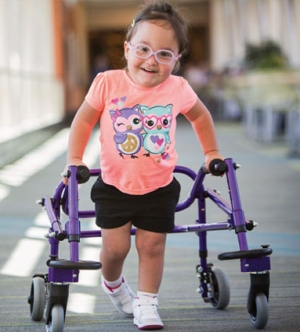 Sometimes, children are diagnosed with cerebral palsy almost immediately after birth, but for others, the signs and symptoms aren’t spotted until they are older. With that being said, it can be difficult to diagnose the condition at a young age, and ongoing observation is often likely. In order to know whether your child does have cerebral palsy, symptoms and characteristics that could be linked to the disorder, they will need to be examined.
Sometimes, children are diagnosed with cerebral palsy almost immediately after birth, but for others, the signs and symptoms aren’t spotted until they are older. With that being said, it can be difficult to diagnose the condition at a young age, and ongoing observation is often likely. In order to know whether your child does have cerebral palsy, symptoms and characteristics that could be linked to the disorder, they will need to be examined.
Of course, each child will have their very own symptoms of the condition, which means that a clear diagnosis isn’t always obvious initially. However, a medical health professional may give you some insight into why your child may have developed cerebral palsy. Here are just a few:
Problems before birth
In some cases, children can develop the condition before they have even left the womb. The development of the baby’s brain can play a huge in whether they’ll have the condition. Some of the most common issues include:
♦ Periventricular leukomalacia: Impairment to the brain called the white matter; which is usually linked to a decrease in the baby’s blood or oxygen supply to the brain.
♦ An infection caught from the mother. E.g., chickenpox, rubella, or toxoplasmosis.
♦ A stroke – often caused by a bleed in the brain
♦ Injury to the head
Problems during birth
Cerebral palsy can also be developed during the birthing process if there was any damage to the brain or contracting a serious infection. In the past few years, there has been an increasing number of babies who have suffered medical negligence during birth and gone on to develop the condition. While the condition is irreversible and your child’s health is of highest priority to you, you can make a cerebral palsy birth injury claim to a solicitor who will be able to investigate the case and get the justice you deserve for your family.
Increased risk
There are occasions when your baby could be diagnosed with the condition due to a standard increased risk. Unfortunately, some of these instances are natural causes, and you shouldn’t blame yourself as they cannot be avoided. These include the likes of:
♦ The baby being born prematurely (especially those around the 32-week mark)
♦ Mothers who are over the age of 35
♦ A low weight at birth
♦ Having twins or triplets
If your child is at an increased risk of developing cerebral palsy, your GP is likely to want to keep a close check on your baby over the first two years of their life in case any symptoms are noticed.
Illness
One of the most common illnesses associated with cerebral palsy is Jaundice; otherwise known as Kernicterus. If this condition is left untreated, it can go on to cause severe brain damage because of a build-up of bilirubin in the blood. If you notice your baby’s skin has a yellow tinge, they are frequently drowsy, are not wanting to feed and has very pale feces, it’s best to seek the assistance of your midwife or doctor to get your baby checked out immediately.
